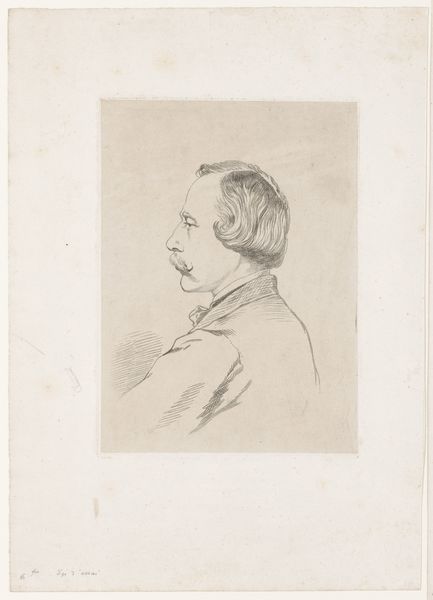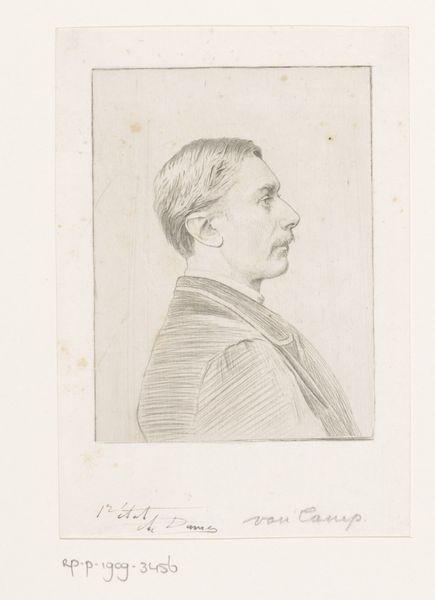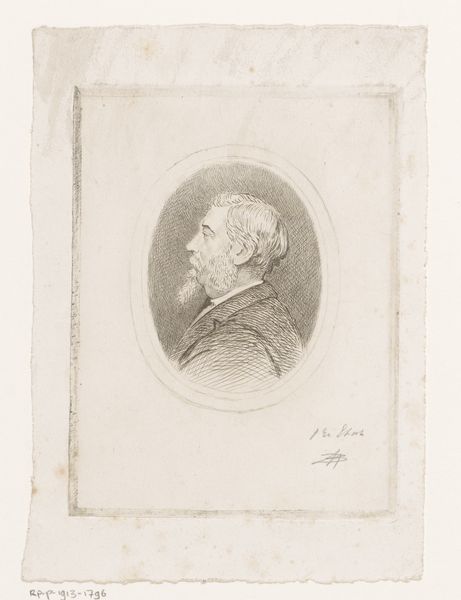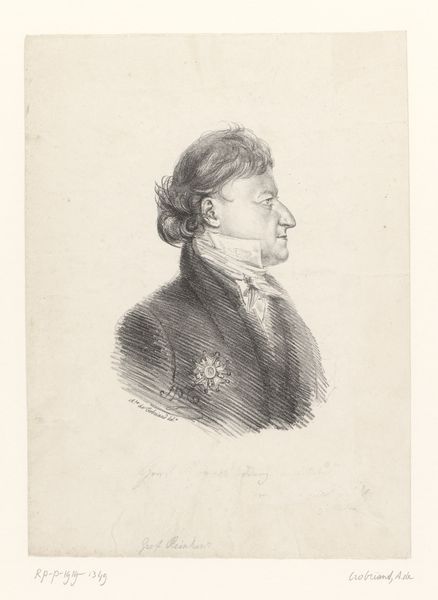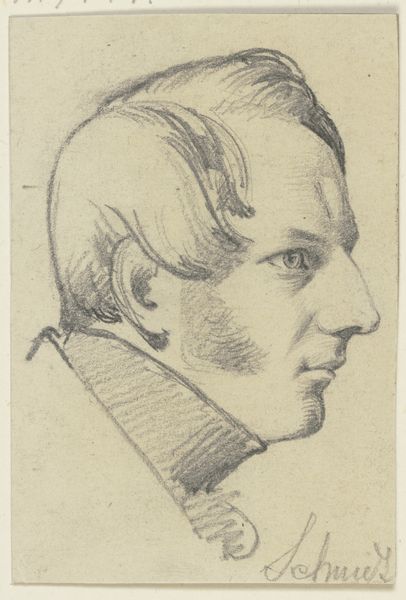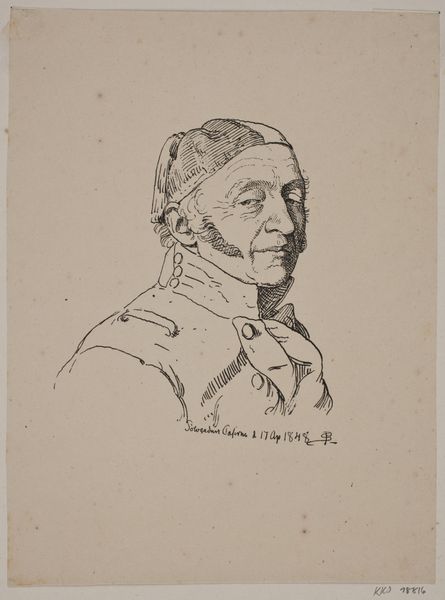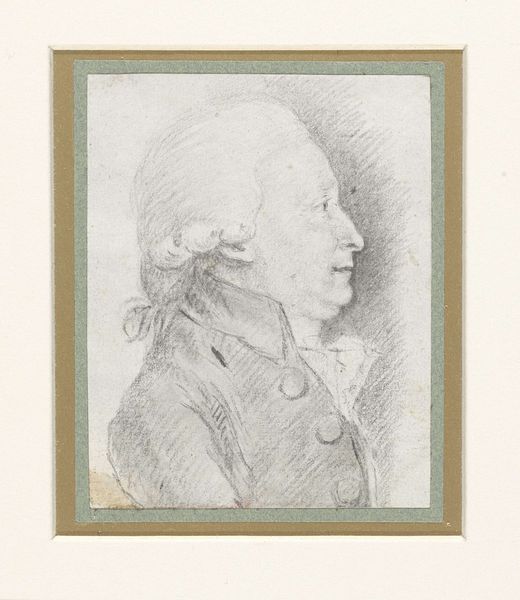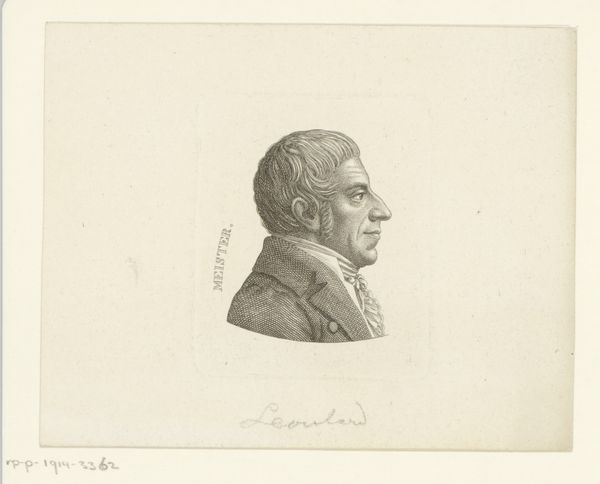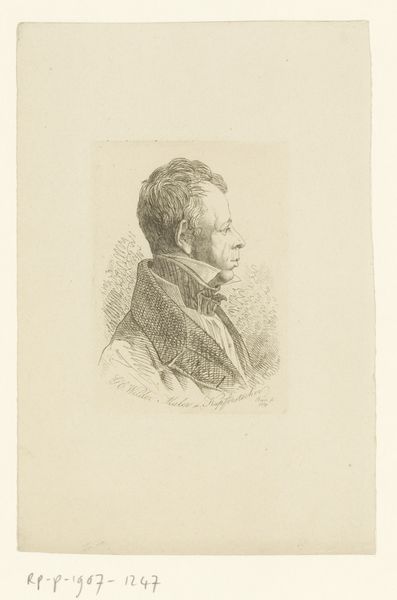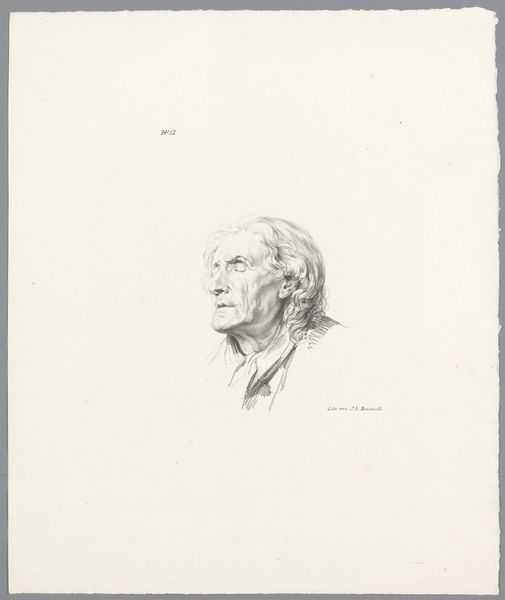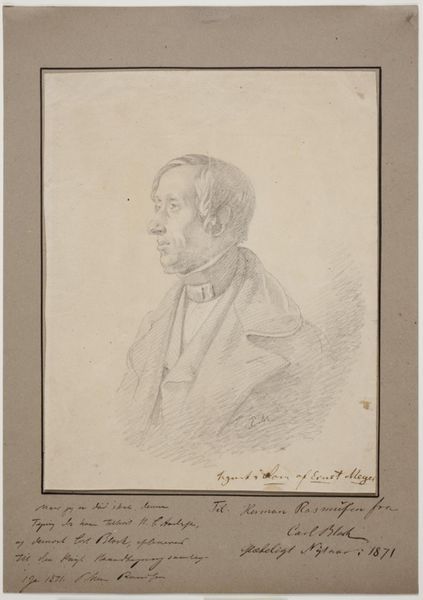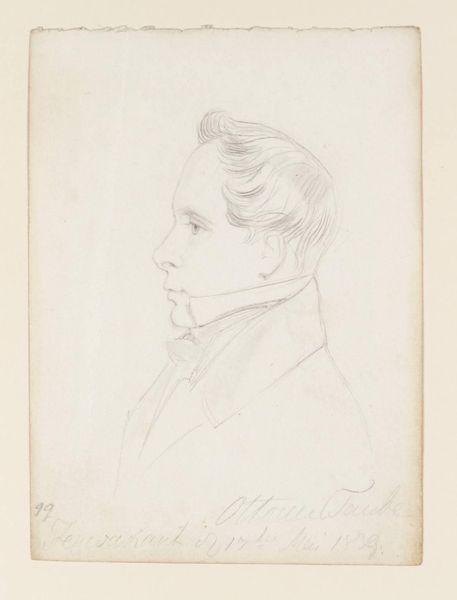
Dimensions: 57 mm (height) x 62 mm (width) (plademaal)
Editor: So, this is August Jerndorff’s “Fuldmægtig Anton L.V. Petersen,” an etching from 1864, now at the SMK. It’s a very formal portrait, almost severe. What can you tell me about its context? Curator: This print gives us insight into the visual culture and the burgeoning Danish bureaucracy of the mid-19th century. Portraiture, particularly in a reproducible form like an etching, served a vital function. Consider its audience: Who would collect such an image, and what purpose would it serve within their social networks? Editor: I guess it shows status, right? The sitter's pose is serious, his clothing is plain but meticulous. The portrait makes him seem trustworthy and efficient. Is that kind of visual signaling common? Curator: Exactly! And how does Jerndorff use line and detail to communicate those characteristics? Think about the meticulous rendering of the suit, contrasted with the more loosely sketched background. It emphasizes precision and control, ideals highly valued in the civil service. Also, consider that the etching being a more affordable format meant more people had access to these images, and subsequently these ideas. Editor: So the availability changes how the art functions socially? Were these images about power? Curator: Precisely. It’s less about the individual's personal power, and more about how visual representations like this contribute to the perception and legitimacy of institutions. This etching helped construct a particular image of Danish officialdom for public consumption. Editor: That’s fascinating. I had never thought about art being used to shape institutions like that! Curator: Looking at it this way reveals art's active role in shaping our understanding of history and power.
Comments
No comments
Be the first to comment and join the conversation on the ultimate creative platform.
